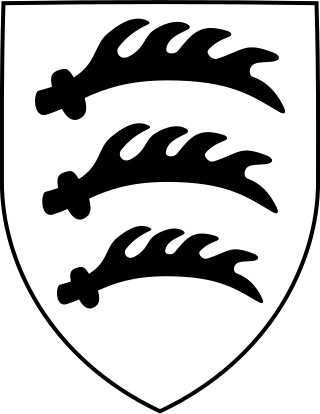
The 208th Infantry Division, or 208.Infanterie-Division in German, was a large military unit that served during World War II. Like most German infantry divisions, the bulk of its troops were foot-mobile infantry supported by horse-drawn artillery.

The 218th Infantry Division (218.Infanterie-Division) was an infantry division of the German Army that served in World War II.

The 78th Infantry Division, later known as the 78th Assault Division, was a German infantry formation which fought during World War II. After the 78th Assault Division was destroyed near Minsk in July 1944, the 78th Volksgrenadier Division was created.

The 272nd Infantry Division was a Type 1944 Infantry division of the German Wehrmacht during World War II, that was originally formed in December 1943. The division fought in many of the major battles throughout Operation Overlord, culminating in the Retreat from Northern France and the Low Countries in late August/early September 1944.

The 25th Infantry Division was a military unit of the German Wehrmacht. It was later reclassified to 25th Motorized Infantry Division, and in June 1943 to the 25th Panzergrenadier Division.

The 45th Infantry Division was an infantry division of the army of Nazi Germany during World War II. Towards the end of the war, the division was reassembled into a second iteration, the 45th Volksgrenadier Division

The 81st Infantry Division was an infantry division of the German Army during World War II. It was active from 1939 until 1945 and served primarily on the Eastern Front.
The 154th Infantry Division, also known as Commander of the Replacement Troops IV, Division No. 154, 154th Reserve Division, 154th Division and 154th Field Training Division was an infantry division of the German Heer during World War II.
The 159th Infantry Division was an infantry division of the German Heer during World War II. The unit, at times designated Commander of Reserve Troops IX, 159th Division, Division No. 159, and 159th Reserve Division, was active between 1939 and 1945.
The 160th Infantry Division was an infantry division of the German Heer during World War II. The unit, at times designated Commander of Reserve Troops X, Commander of Reserve Troops X/I, 160th Division, Division No. 160, and 160th Reserve Division, was active between 1939 and 1945.
The 166th Infantry Division was an infantry division of the German Heer during World War II. The unit, at times designated Commander of Reserve Troops 2 of Wehrkreis VI
The 190th Infantry Division, initially known as Division No. 190, was an infantry division of the German Heer during World War II.

The 198th Infantry Division was an infantry division of the German Heer during World War II.
The 251st Infantry Division was an infantry division of the German Heer during World War II.
The 270th Infantry Division was an infantry division of the German Heer during World War II.
Infantry Division 309, also known as the 309th Infantry Division, Infantry Division "Berlin", and Infantry Division "Greater Berlin", was an infantry division of the German Wehrmacht during World War II.
The 416th Infantry Division was a German infantry division of World War II.
The 331st Infantry Division was an infantry division of the German army during World War II. It was active between 1941 and 1944, with a brief period of inactivity between 30 December 1943 and 16 March 1944.
The 526th Infantry Division was an infantry division of the Heer, the ground forces of the German Wehrmacht, during World War II. Assembled in October 1939, it subsequently became the Division No. 526, also referred to in some Wehrmacht sources as the "526th Reserve Division". It existed until early 1945.
Infantry Division Potsdam was a German infantry division of the Heer during World War II. It was active for only a few weeks near the very end of the war, starting in late March 1945.







